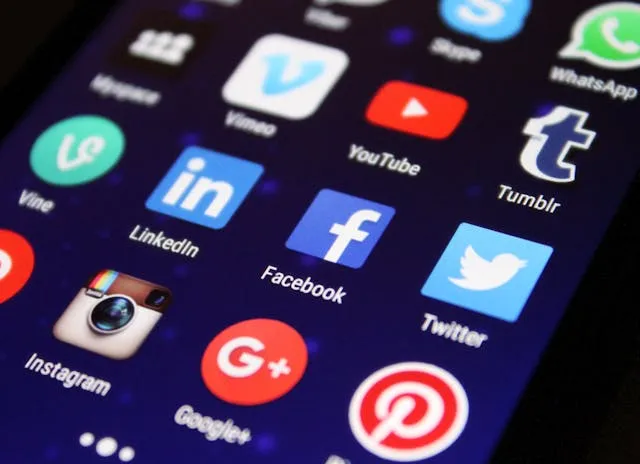Every founder dreams of building an app that does more than just survive in the marketplace. The real prize is creating something that not only gains users but evolves into a brand recognized worldwide. Yet the reality is sobering. Most apps struggle to find traction, let alone reach the level of million-dollar success stories.
What separates the few that thrive from the many that vanish is not luck. It is a deliberate process that starts with identifying a real problem, validating solutions, and scaling with precision. Think of the apps that turned simple ideas into household names. Each followed a set of principles that fueled growth and sustained its value over time.
Read more: Selling Digital Downloads on Instagram and TikTok: What Works
This article unpacks those principles and provides a practical roadmap. If you are looking to build an app that has the potential to become a million-dollar brand, here is where to begin.
Start With a Problem Worth Solving
Every successful app begins with a simple truth: it solves a problem that people genuinely care about. Before design, code, or marketing, the foundation of a great app is its relevance to users’ lives.
Think about why Uber, Airbnb, or WhatsApp became global forces. Each addressed an everyday challenge with a solution that felt obvious once it existed. Uber simplified transportation in cities where cabs were unreliable, Airbnb unlocked access to unique travel stays, and WhatsApp made international communication instant and free.
For founders, the takeaway is clear. Do not chase trends just because they are popular. Instead, invest time in market research, surveys, and user interviews to uncover pain points that are persistent and unsolved. Once you identify the right problem, the product you build has a natural pull toward adoption. This step creates the backbone of a million-dollar brand.
Nail Product-Market Fit Early
Once you have identified a strong problem to solve, the next step is validating that your solution resonates with real users. This is what product-market fit is all about. Without it, even the most polished apps eventually fade out.
The smartest founders test their ideas early with prototypes or minimum viable products. Instead of pouring resources into a full build, they release a stripped-down version to gather insights. Feedback from actual users highlights what works, what needs refinement, and whether the idea has the potential to scale.
Achieving product-market fit means users not only try your app but also return to it, recommend it, and see it as indispensable. That loyalty is what separates fleeting experiments from lasting businesses. It is the critical stage that transforms a concept into something investors and partners are eager to support.
Build With User Experience as the Core
An app may solve the right problem and even show early traction, but it cannot scale into a million-dollar brand without exceptional user experience. People abandon apps quickly if they feel clunky, confusing, or slow. On the other hand, a clean design, seamless navigation, and reliable performance keep users coming back.
User experience is more than visuals. It is about how quickly someone can achieve what they came to do. Fast load times, minimal friction, and intuitive flows are what turn casual users into loyal ones.
That is why many startups work with global partners who understand both design and scalability. Whether it is a mobile app development company in Miami, a tech hub in Austin, or product studios in Berlin, having the right expertise ensures that apps are built to engage and grow from the very beginning.
Scale With the Right Technology Stack
Even with the right idea and strong user experience, an app cannot grow into a million-dollar brand without a technology stack that supports scale. The tools and frameworks chosen at the beginning often determine how smoothly an app handles rising traffic, new features, and global expansion.
Founders need to consider whether to build native apps, opt for cross-platform frameworks, or leverage cloud infrastructure for flexibility and speed. Each choice affects performance, cost, and long-term sustainability.
Many startups lean on experienced partners who have navigated these challenges before. Working with a mobile app development company in Dubai, alongside hubs like London or Singapore, gives access to teams that specialize in scalability and innovation. Their expertise helps transform a promising product into one that can handle thousands—or millions—of users without breaking down.
Growth Levers Beyond Development
Building the app is only the first milestone. The real test begins when it enters the market and competes for user attention. Growth comes from a mix of smart marketing, monetization, and retention strategies.
App Store Optimization ensures visibility, while paid campaigns and influencer partnerships accelerate reach. At the same time, every app needs a monetization model that fits its audience. Subscriptions, in-app purchases, and freemium tiers all offer different paths to revenue.
Retention is just as important as acquisition. Push notifications, referral programs, and loyalty features keep users engaged long after download. Apps that reach the million-dollar mark often balance aggressive growth tactics with genuine value, turning short-term installs into long-term communities.
Building a Brand Around the App
An app that aspires to become a million-dollar business must evolve beyond functionality and transform into a recognizable brand. Features may attract users, but identity is what keeps them loyal.
Brand building begins with consistency. The tone of your messaging, the visual identity, and the story you tell across every channel should reinforce the same values. Think of how apps like Spotify or Instagram resonate — they are more than tools; they are part of culture.
Community also plays a big role. Apps that encourage user participation, feedback, and sharing naturally create advocates who promote them without being asked. When users begin to associate your app with trust, reliability, and a lifestyle, you are no longer competing on downloads alone. You are competing as a brand with equity.
The Path to Scaling and IPO
Once an app has secured loyal users and built a recognizable brand, the next phase is scaling on a larger stage. This often begins with funding rounds, where investors look for traction, retention rates, and evidence of market demand. Securing early investment fuels growth, while later rounds pave the way for international expansion.
Strategic partnerships also play a role. Collaborations with established enterprises, integrations with complementary platforms, or entry into new markets can accelerate adoption. As the user base grows, so does investor confidence, creating momentum toward a public offering.
Not every app will reach IPO, but those that do share a common path. They solve real problems, achieve product-market fit, scale with the right technology, and grow into brands people trust. That combination is what transforms ordinary products into multi-million dollar businesses.
Key Takeaways for Founders
The journey from an idea to a million-dollar app is not accidental. It requires solving a meaningful problem, validating solutions through product-market fit, building user-first experiences, and scaling with the right technology. Growth comes from more than downloads — it comes from loyalty, branding, and consistent execution.
For founders, the path is clear. Focus on value, partner with the right expertise, and never lose sight of the user. Do this well, and your app stands a real chance of moving beyond being just another product in the marketplace. It can become a business with long-term impact and the potential to reach the million-dollar mark.



